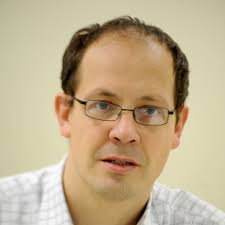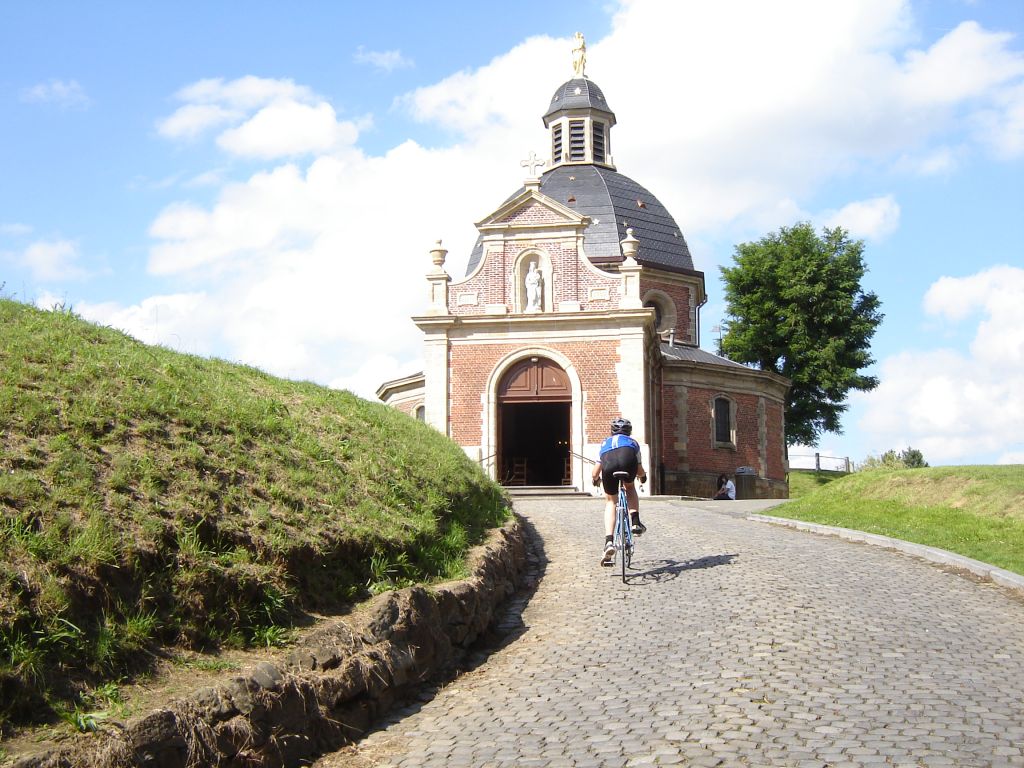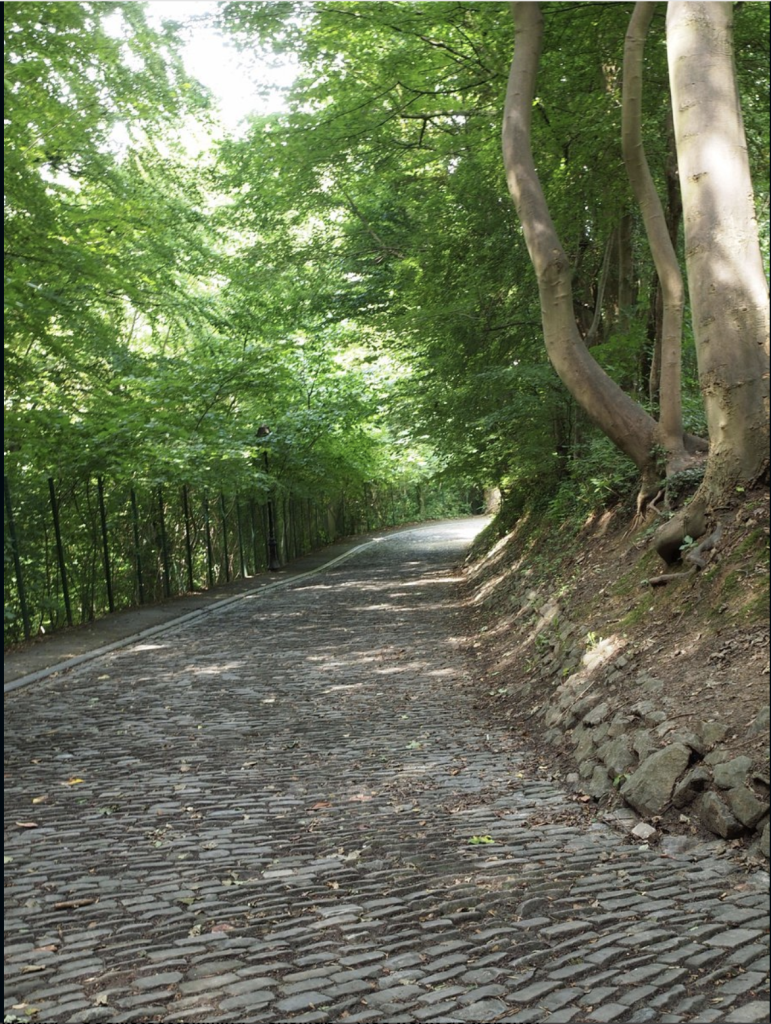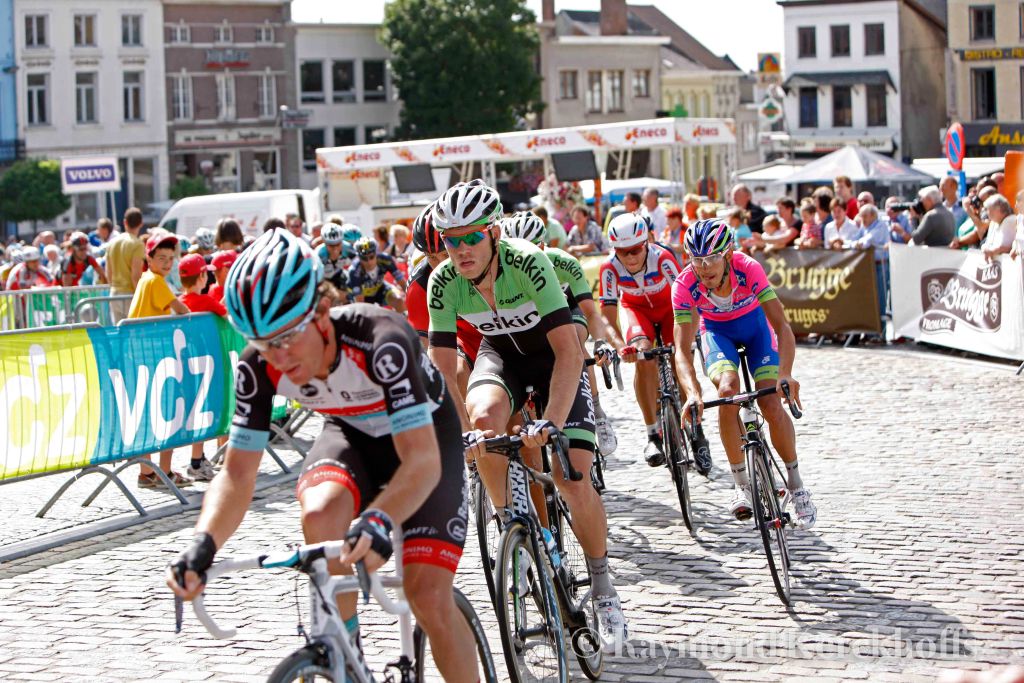
Professor in economics at KU Leuven, Belgium.
Follow his Twitter-account @vrdaam for regular updates on TV audiences for cycling.
In this year’s unique October edition of the Ronde van Vlaanderen the riders will not have to climb the steep “Muur” of Geraardsbergen, one of Flanders’ most famous cycling hills. Only three years after its successful re-introduction in 2017, the cobblestoned climb is once again removed from the race. Just like in 2012, the previous time the “Muur” suffered this fate, sporting reasons are said to be main rationale for the decision. “Removing the loop to Geraardsbergen reduces the total race distance by about 30 kilometers, which is in the best interest of the riders who will have to deal with an already overloaded cycling program in October”, explained Tomas Van Den Spiegel, CEO of race organizer Flanders Classics.
In reality however, as was the case in 2012, money lies at the heart of the decision. Back then it was argued that since the finish of the Ronde van Vlaanderen had been moved from Ninove to Oudenaarde, a quite meaningless passage over the “Muur” at 100 kilometers from the finish line would be disrespectful to the iconic climb and its heroic history. The recent editions of the Ronde van Vlaanderen debunked that argument. Especially the 2017 edition demonstrated that even at almost 100 kilometers from the finish, the “Muur” can play a crucial role in unlocking the race. The real reason for the removal of the “Muur” in 2012 was indeed not a sporting one. It was the financial dispute between race organizer Flanders Classics and a number of local VIP and hospitality organizers in Geraardsbergen, who benefited well from a passage of the Ronde van Vlaanderen, that lead to that decision. The dispute was settled in 2017 and the city of Geraardsbergen agreed to pay a fee of about €50,000 a year for welcoming the race.

FOTO: WIKIPEDIA
To understand the recent move by Flanders Classics to exclude the “Muur” from this year’s race, we have to look back at what happened in December 2019 when the news broke that the city council of Geraardsbergen had decided to stop paying Flanders Classics a hosting fee. According to local mayor De Padt, “budgetary constraints no longer make it ethically right to spend this amount of money on an event that only lasts a couple of minutes.” He did emphasize though that the race remained welcome and that the city would continue to support a passage on the “Muur” logistically.
That decision raises an interesting economic question that is at the heart of the financing of cycling races, and thus is of importance to race organizers as well as local municipalities and regional entities. Why did Geraardsbergen actually pay money for the passage on their own “Muur” in the first place? Shouldn’t it be the other way around?
The economic principle is clear: when you need something that belongs to someone else, you can claim its use or possession by paying a compensation to that person, reflected in what we call a price. When I want to visit Paris for a couple of days, I pay for a room to sleep, and if I feel hungry, I buy a sandwich in a local shop. My overall willingness-to-pay will be determined by my need or eagerness to stay in that hotel or eat that sandwich.
In the situation we are looking at, one must therefore ask whether the Ronde van Vlaanderens needs the “Muur”, or conversely, Geraardsbergen needs the Ronde van Vlaanderen. Depending on the answer to that question, the direction of any payment becomes clear. The fact that up to now Geraardsbergen has been on the paying side suggests the latter is the case, but it is the least logical outcome from an economic point of view. The fact that Geraardsbergen, as the owner of the “Muur” has to pay Flanders Classics to let the Ronde van Vlaanderen use its local road infrastructure, is the economic equivalent of offering money to your neighbors to organize their garden party in your backyard.
Yet, sometimes it makes sense to pay others to come and visit you, especially when certain benefits are expected to arise from doing so. For example, I might want to pay Peter Sagan to have his party in my garden. The personal satisfaction I will get from that event as well as the impression I can make on my friends, could justify such an expenditure. It is unlikely though that Sagan will pay me to have a party in his garden.
A similar reasoning applies to the city of Geraardsbergen. Due to the Ronde van Vlaanderen’s prestige, a passage over the “Muur” generates various benefits. The international TV broadcast creates a long-term promotional value and reinforces Geraardsbergen’s cycling image. In addition, the expenses made by the extra visitors on and around the “Muur” on the day of the race, generate a direct economic return. According to economic logic, this is surely worth a decent amount of money and it puts Geraardsbergen on the demand side of the market. The city “uses” the Ronde van Vlaanderen and must therefore pay Flanders Classics an acceptable price. In this view, Geraardsbergen needs the Ronde van Vlaanderen more than the Ronde needs the “Muur”.

The city council’s decision to stop paying the €50,000 fee can be explained along the same lines. Geraardsbergen will no longer be willing to invest money the moment it feels the direct and longer term benefits of a ‘Muur’ passage no longer outweigh its costs, taking into account that on top of the fee there are significant organisational costs as well. To understand what happened, we must go back to 2012. When the finish of the Tour of Flanders moved to Oudenaarde and the ‘Muur’ was – temporarily – removed from the race, Geraardsbergen started to look for alternatives. In 2015, it became an attractive finish town for the decisive stage of the Binckbank Tour. By using local loops, the race is held in and around Geraardsbergen all afternoon and has usually been very exciting to watch as well. The much smaller global TV reach of this competition (1 million live TV viewers versus 5 million) is more than offset by the longer coverage (a couple of hours instead of a couple of minutes). Because visitors stay around much longer, the local economic impact in bars and restaurants is more significant as well. Because of its success, the Binckbank Tour deal has been renewed until 2022 (for now) at a cost of €55,000 a year.
As a result of this change in strategy, welcoming the Ronde van Vlaanderen is no longer a necessity for Geraardsbergen and consequently its willingness to pay for a “Muur” passage evaporates. If, however, Flanders Classics considers the “Muur” to be a quintessential ingredient of the race, according to the earlier explained economic logic we should witness a reversal of the positions. Flanders Classics will need to pay Geraardsbergen for the right to enter this sacred place of cycling. In this view, the Ronde van Vlaanderen needs the “Muur” more than Geraardsbergen needs the Ronde.

PHOTO: RAYMOND KERCKHOFFS
Another factor that has to be taken into account is the fact that the “Muur” is a public road, as is, by extension, the entire race course. By their nature, such public goods are available to everyone. But when a cycling race claims part of a city’s infrastructure, this public space is privatized for a certain time. Society may find this temporary privatization acceptable and offer it for free to race organizers, e.g. because of the joy and wellbeing it creates, but there are economic arguments as well to support the idea that a fee should be paid for this privatization of public roads. This already happens to a certain extent in an indirect way when competition organizers bear part of the policing and security costs of a cycling race.
In recent years, Flanders Classics had succeeded in charging ever more cities and villages a fee for the privilege of welcoming the Ronde van Vlaanderen. While in the distant past only the finish town had to pay, the city where the race started was soon kindly requested to pay a fee as well, followed by initially one and since 2017 no fewer than seven “villages of the Ronde”. The price such villages have to pay (just over €10,000) is much less than what Geraardsbergen was charged. Since Antwerp and Oudenaarde are currently reported to each pay €400,000, Flanders Classics now earns approximately €1 million a year by selling the passage of the race to local municipalities.
Simply accepting the decision of Geraardsbergen could thus set a dangerous precedent for Flanders Classics. If the race ‘visits’ the “Muur” for free, it weakens Flanders Classics’ negotiating position against other local authorities that would like to welcome the Ronde van Vlaanderen, putting this significant source of income at risk. By removing the “Muur” from the Ronde van Vlaanderen, with a little help from Covid-19 Flanders Classics sent a clear message to all its local partners: you need us, we don’t need you. The question is how much longer this proposition will hold, with local governments facing ever tighter budgetary constraints and citizens more and more aware of the negative effects that hosting sports events brings along as well.

